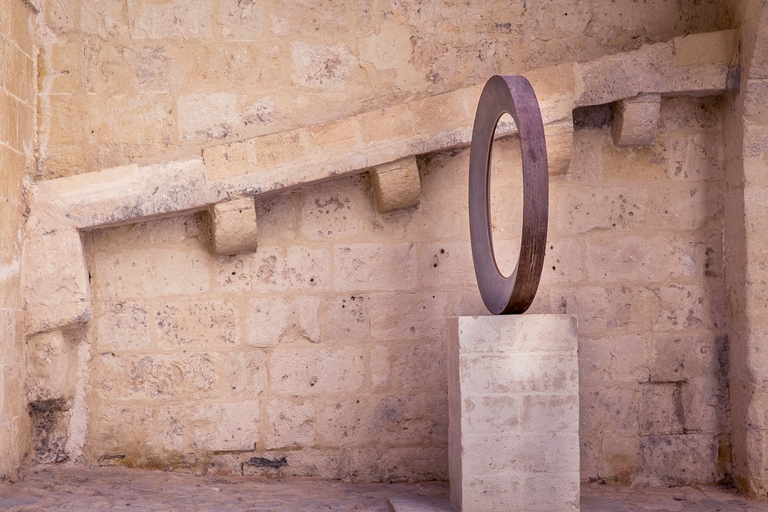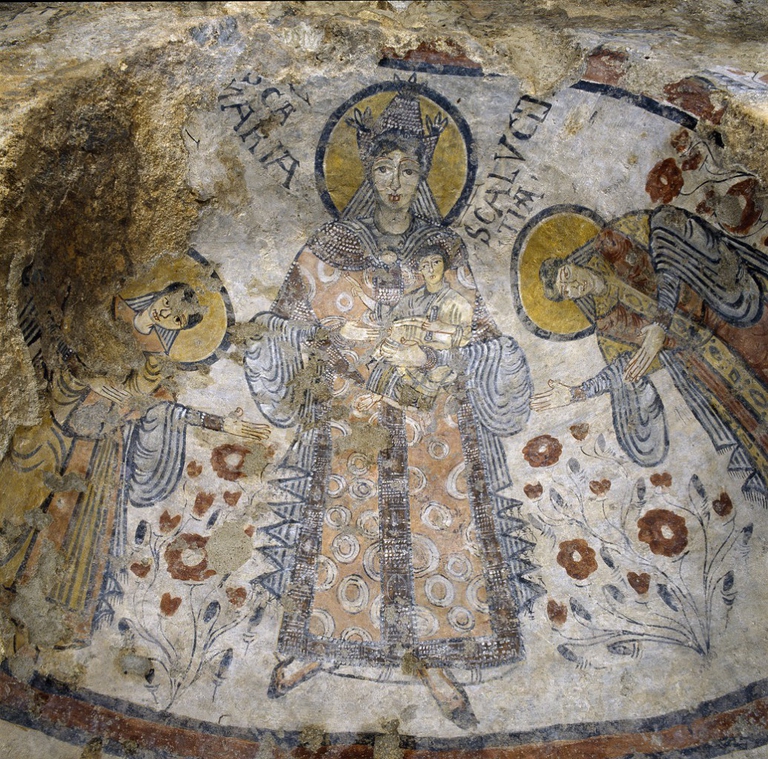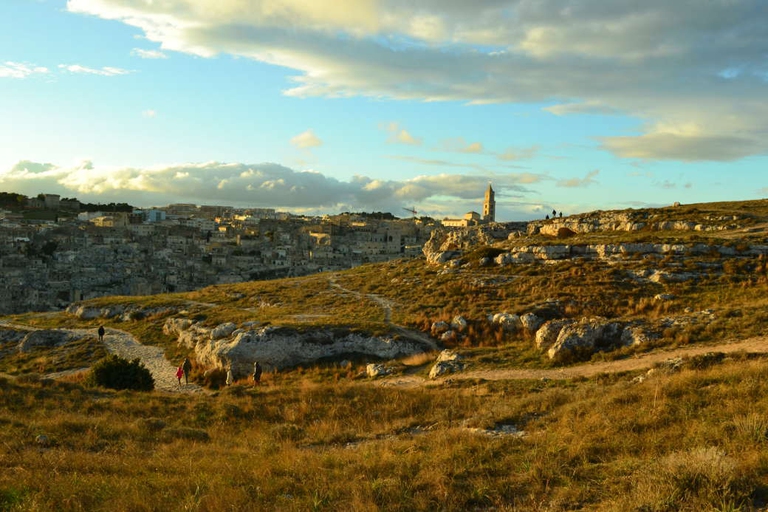
Niseko, Toya-Usu and Shiraoi are three Hokkaido destinations for travellers who want to feel close to the communities they’re visiting.
Matera in Italy, famous for its Sassi, will be the 2019 European Capital of Culture. A travel itinerary of the city and province of Matera, including walking tours, to discover its extraordinary beauty with every passing hour.
“Anyone who sees Matera can’t help but be awe-struck, so expressive and touching is its sorrowful beauty”. This is what painter Carlo Levi wrote to describe Matera, the city in the region of Basilicata famous for its “Sassi” (stones) – the city centre’s districts made up of houses carved out of caves and cliffs – that went from being considered the shame of Italy to being chosen as one of the 2019 European Capitals of Culture, as well as being designated a Unesco World Heritage Site. A title that confirms what the Lucanians, the descendants of the ancient inhabitants of the region – as well as many others – already know: this is a fragile, marvellous and unique place. However long you’re staying, these are our suggestions for things to do and see in Matera, a travel itinerary in the province of Matera that includes the Sassi, caves and churches as well as walking tours, where to eat and day trips to fall in love with this magical city.
Read more: Timeless Matera, a journey into Italy’s city of stone
Like many of Matera’s wonders, the Musma can’t miss from a travel itinerary to explore this city: it is located in the Sasso Caveoso, a wonderful yet labyrinthian area of the city. The uniqueness of this place is immeditaly obvious, it is in fact the most important Italian museum dedicated to sculpture: though this art form is often overlooked in the country, in this case many evocative spaces are dedicated to it. The works are found inside Palazzo Pomarici (dating from the 16th century) as well as the various excavated chambers. This vast collection covers the course of Italian and international sculpture from the late 1800s to modern times through sculptures, ceramics, medallions, jewels, drawings, graphics and books, made even more fascinating by the museum’s atmosphere.
It is a mysterious and exciting journey: we suggest not to follow the map you receive in the museum but to let yourself be guided by the light that seeps through the openings in the Sassi from the courtyard, and let yourself be amazed by what it reveals. This is the only way to really admire the astonishing site itself, not only the beauty of the sculptures. The silence is striking, as well as the sounds that accompany the light effects created by being inside the Sassi. A truly magnificent experience that will help you appreciate the sculptures in their various forms, and understand the close relationship between the location and art. The Musma is the only “cave” museum in the world, a source of national pride and true marvel. It is closed on Mondays and opens from 10am to 2pm and from 4pm to8 pm from April to September.
Matera isn’t only the Sassi, there are many characteristic sites in the higher section of the city – called Civita by its inhabitants – that should be visited at specific times of the day. It is pretty clear that light plays an important role here: even in winter the sun shines on the Sassi and some of the city’s monuments, making them even more breathtaking. The best time to explore the city is at dusk: most locals are still asleep and haven’t started their day yet, only a few brave tourists are awake in the early hours.
This is the walking tour we suggest to explore the Sassi, the lower part of the city, after seeing what the higher part of Matera has to offer: the San Biagio church is a small marvel but is only open on the 3rd of February to celebrate the saint it is dedicated to; if you keep walking towards the city centre you’ll reach San Giovanni Battista church, a perfect mixture of romantic, Gothic and arabesque elements. Then, in a corner of Vittorio Veneto square, the sun kisses San Domenico church and convent, whose rose window depicts a dog with a torch in its mouth, symbol of the Domenicani (domini canes, the dog that guards the Lord: the torch represents faith).
Even if art isn’t your passion a visit to Palazzo Lanfranchi, where the National Museum of Medieval and Modern Art is located, is unmissable. Carlo Levi’s Lucania 61 painting is kept here, key to understanding the contradictions of this region. The work was commissioned to celebrate the centenary of the Italian unification, representing Basilicata in the 1961 exhibition in Turin. Levi was the artist who could best describe the region at the time, deciding to create this huge painting (18.50 by 3.20 metres) to fully capture Lucanian culture.
Following this brief itinerary, you can visit the Sassi of Matera without a guide, on foot with no need of a map. If you get lost, it is enough to go up to reach the “other” Matera. If you want to experience other colours and a different atmosphere you must wait for the sun to set, but at this hour the streets won’t be as empty as before.
The Crypt of the Original Sin must be visited because it holds a series of frescoes from the 8th and 9th centuries that perfectly represent the Benedictine and Benevento art forms, created by a man known as the Flower Painter from Matera, and because the road that leads to it offers wonderful views, especially on a sunny day. A reservation is required to visit this place, known as the “rocky” Sistine Chapel, and it’s outside the city so it can be reached solely by car (there are no buses from Matera yet). All information can be found here. On arriving you’ll be greeted by the beauty of the Gravina river as well as a symbol of the region’s transport problems, an iron bridge that is part of the never-completed Ferrandina-Matera railway line, started between 1954 and 1959.
The crypt was “discovered” in the 1960s, when it was being used as a shelter for animals, and the frescoes were uncovered after a long restoration. Even though only parts of the paintings were retrieved, it is still a fascinating reminder of how glorious this holy place must have been in the past. Santa Lucia alle Malve is instead located in the Sasso Caveoso and is the first female monastery of the Benedictine Order, from the 8th century, the most important such structure in the history of Matera. Many people get lost trying to get here but are left astonished once they reach the small portal in the rocks: not only is the location of this monastery truly magical but the ancient frescoes, some more than a thousand years old, are perfectly preserved thanks to the specific conservation techniques used by Matera’s master painters over the course of the centuries.
You can never really get to know a place or its people without tasting the local cuisine, this is why you need to take part in the traditions of this city, which are often connected to food, to really understand Matera. Eating is a serious matter for its people. Every recurrence is paired with a typical dish, and as you walk around the city you’ll encounter various restaurants and inns that invite tourists to try their culinary specialties. “Hot pettole today” is one of the most common signs: pettole are a typical dish especially around Christmas time, a sort of fried pancake made with bran flour, water, salt and yeast. Excellent, especially if eaten warm. The tastiest version is the ceccio, a maxi-pancake made in the same way but with the addition of fried onions, or just sugar in its sweet version. An even simpler, healthier meal is the famous Matera bread, pride of the city, especially the one made by the Pane e Pace bakery.
Meat is one of the most important ingredients in Matera’s cuisine, and one of the most traditional dishes is the pignata, which consists in alternating layers of goat meat, potatoes, celery, onions, tomatoes and soppressata (a type of dry salami), baked in a watertight terracotta pan known as pignata. The pan is placed in a wood oven, far from the flames and embers, for around three hours depending on the amount of meat and the size of the terracotta pan. Before putting the pignata in the oven it must be sealed with dough, which creates a watertight lid on this wonderful and ancient recipe as it’s being cooked. When the dish is ready it’s served with grated pecorino cheese. Meat lovers should also try the marro, a tasty roll made with lamb innards put inside and tied with the animal’s guts. Last but not least are the famous cartellate, a sweet pastry made with vincotto: the origins of this dish are still a matter of contention with the nearby Puglia region.
It’s best to visit the Belvedere viewpoint as soon as you reach Matera as it’s the only place from which you can perceive exactly where you are. When describing the Sassi no one can really explain how the old city is shaped or structured, nor differentiate Sasso Caveoso from Sasso Barisiano and illustrate their characteristics. But just a few kilometres outside the city – about 15 minutes on the Statale 7 – you’ll reach one of the most fascinating views in the area, that seen from the Belvedere Murgia Timone. A few steps from a free parking space you’ll encounter the most breathtaking view of Matera. On a sunny day, often even in winter, the view is spectacular whether you look towards the Sassi or the Murgia Materana Park. The morning light is peaceful and the evening is characterised by a magical atmosphere. This location is always filled with tourists, except for very early in the morning, when you’ll more likely encounter photographers looking for the perfect shot. Being “inside” the Sassi and walking through them is a fantastic experience, but seeing them from afar is what really makes one comprehend the amazing uniqueness of this place.
Siamo anche su WhatsApp. Segui il canale ufficiale LifeGate per restare aggiornata, aggiornato sulle ultime notizie e sulle nostre attività.
![]()
Quest'opera è distribuita con Licenza Creative Commons Attribuzione - Non commerciale - Non opere derivate 4.0 Internazionale.
Niseko, Toya-Usu and Shiraoi are three Hokkaido destinations for travellers who want to feel close to the communities they’re visiting.
Disabled travellers need not fear Japan. Accessible Japan founder Josh Grisdale tells us about his commitment to opening the country’s doors to everyone.
Antarctica is becoming more accessible, so much so that tourism has seen a 53 per cent increase in the last four years. And climate change is on of the reasons people visit the frozen continent.
Alpinism has officially been added to the UNESCO Intangible Cultural Heritage (ICH) list. Its candidacy had been jointly submitted by France, Italy and Switzerland.
The word biodiversity recalls lush forests inhabited by countless animal and plant species. Life, thanks to its blind determination, blossoms in a myriad of stunning environments: from deserts and volcanoes to mountains covered up by perennial ice. The most extreme and inhospitable ecosystems can host animals and plants that adapted in the name of survival.
Not just skyscrapers: the Japanese capital is a much greener city that most people imagine. Let’s discover the best Tokyo parks and gardens from autumn to spring, and anytime in between.
Vienna will amaze you with the magnificence of its past and modernity of its services. A tour among the best sights of an environmentally-friendly city with award-winning quality of life standards.
Chile has unveiled the Patagonian Route of Parks, an incredible trail that connects 17 national parks with the aim of promoting nature conservation and community development.
Trekkers throughout the Himalayas have contributed to creating the highest garbage dump in the world. Sustainable tourism in Nepal is still absent, but sorely needed.










